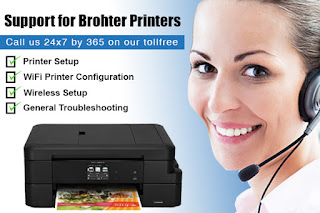10th-gen CPU buyers guide
If your brain broke this morning when Intel announced its
10th-gen Comet Lake laptop CPUs, which will sell alongside its 10th-gen Ice
Lake chips, we understand.
Among the two different manufacturing processes (one
advanced and one very refined) as well as very different graphics cores, core
counts and power levels, it’s confusing enough to make you want to switch to a
Windows on ARM laptop (just kidding, we’re not that frustrated). Even Intel
itself admits there “might be some confusion” between its different
10th-gen CPUs.
How to use our chart
On the far left are the individual model numbers of each new
10th-gen CPU. As you look across the table, you’ll see important performance
criteria and how we’re rating each CPU model. As you move from left to right,
ask yourself how important each criterion is for what you do or might do, and
note how it balances against the other CPUs.
New instructions
With the 10th-gen Ice Lake CPUs, Intel has added support for
AVX512 instructions, which can speed up deep learning and AI functionality.
This can manifest in photo applications that can detect faces faster and with
more accuracy. We call features like AVX512 “future proof,” because the truth
is the vast majority of applications today don’t use the new instructions. If
you buy into the new feature, it’ll likely take months if not years for them to
be used. Is it worth it? One example of “future proofing” was the SSE support
in the Pentium III. It offered minimal practical benefits when launched in 1999
but rapidly became worth its weight in gold once MP3 encoders supported it.
With 10th gen, only the 10nm-based Ice Lake CPUs have AVX512.
Quick Sync video encoding performance
Quick Sync is specialized video encoding hardware in Intel
CPUs with integrated graphics support. The 10th-gen Ice Lake features Intel’s
newest encoding engine, which can be dramatically faster especially with newer
HEVC/H.265 CODECs. Applications will need to be updated to support the faster
performance. If video conversion using the newest formats is important to you,
the 10th-gen Ice Lake should rank higher.
Multi-core workloads like video editing
More cores are generally going to be better for most
advanced content creation chores such as video editing, 3D modelling, or
advanced photo tools that support the additional cores. You might also want to
look to multi-core performance CPUs if you like to run multiple apps that are CPU-intensive
at the same time. A CPU with more cores tends to outperform one with fewer
cores when multi-tasking heavily, so look to the CPU with the most cores for
that job. In this case, it’s the Core i7-10710U.
However, if your idea of multi-tasking is having Chrome open
alongside Outlook, Word, and Excel, then a quad-core or even dual-core would
likely be perfectly fine, as long as it’s paired with enough RAM and an SSD.
Single-core workloads like photo editing or Office
Most applications, even new ones, usually don’t take
advantage of multi-core CPUs. These apps instead tend to get more performance
from just a core or two running at very high clock speeds or with greater
efficiency. Yes, Megahertz still matters. For this category, we rate the CPUs
with the highest clock speeds, and the capability to actually hold them at the
top. In this case, the 10th-gen Comet Lake CPUs that can hit 4.9GHz and 4.7GHz
are likely to outpace the 10th-gen Ice Lake chips by a step or two.
Gaming and graphics performance
Gaming and graphics performance is pretty straightforward.
The CPUs with the best graphics performance will give you smoother gaming or
prettier graphics. With this generation, the 10th-gen Ice Lake chips with the
“G7” rating get the highest rating. In fact, it can be on a par with some
discrete graphics chips. We’re rating the graphics performance of the 10th-gen
Comet Lake CPUs as “adequate,” because for the most part, it’s the same as
previous 8th-gen, 7th-gen, and 6th-gen laptops in graphics performance.
Battery life
Our last category is how we’d rate each CPU model based on
battery life. We say this with the caution that battery life of a laptop is a
recipe based on each individual laptop design including the screen quality and
type, the screen resolution, the battery size, and the tuning by the laptop
vendor. Still, the CPUs we rate as the best are the ones intentionally tuned to
lower power consumption. For 10th-gen Comet Lake, it’s the Y series of CPUs and
the power-sipping dual-core 10th-gen Ice Lake CPUs.
Abigail Smith is an inventive person who has been doing intensive research in particular topics and writing blogs and articles on Printer Customer Support and many other related topics. He is a very knowledgeable person with lots of experience. If you’re not running A/V protection right now and you want more than what Windows Defender offers, this is a great buy.
Abigail Smith is an inventive person who has been doing intensive research in particular topics and writing blogs and articles on Printer Customer Support and many other related topics. He is a very knowledgeable person with lots of experience. If you’re not running A/V protection right now and you want more than what Windows Defender offers, this is a great buy.




Comments
Post a Comment